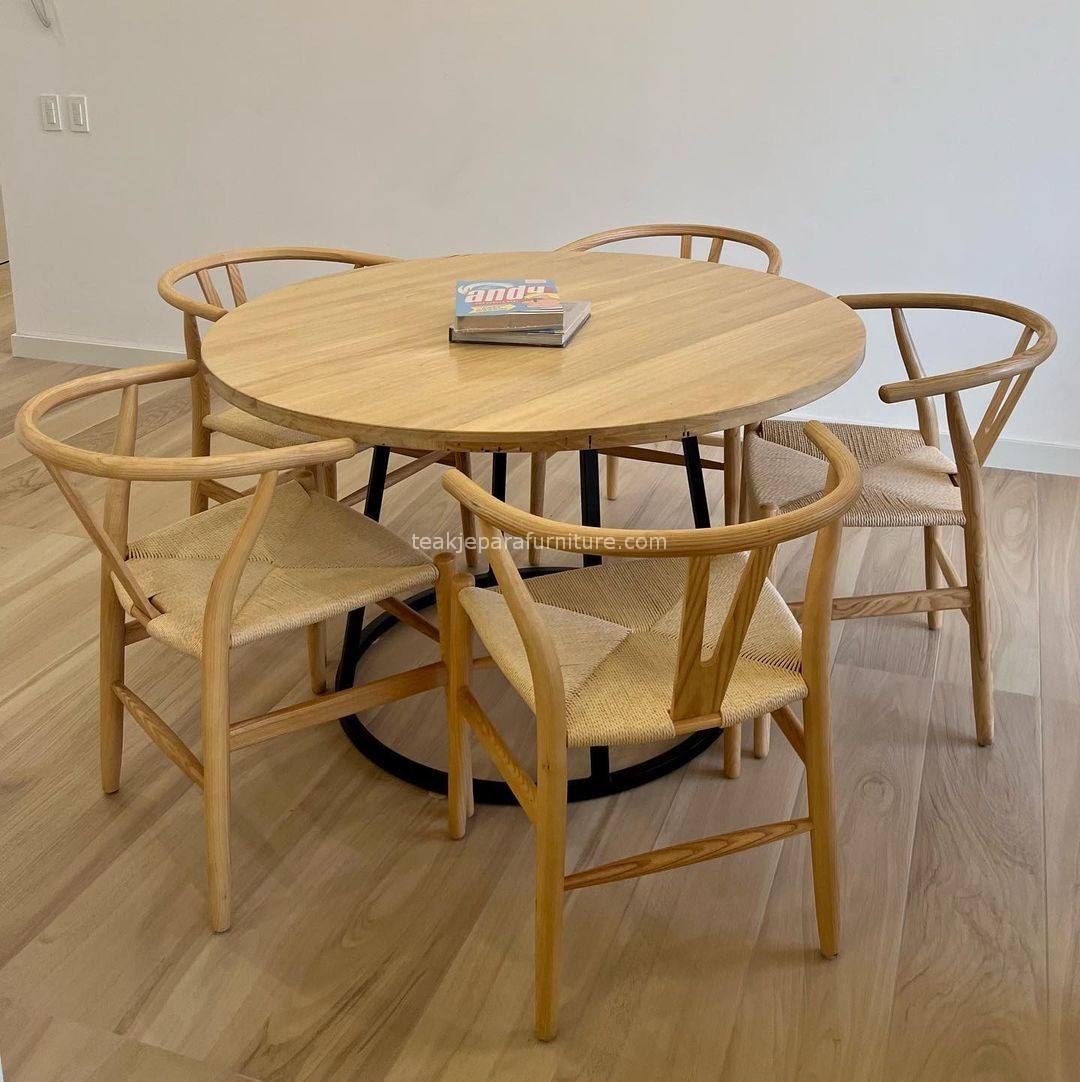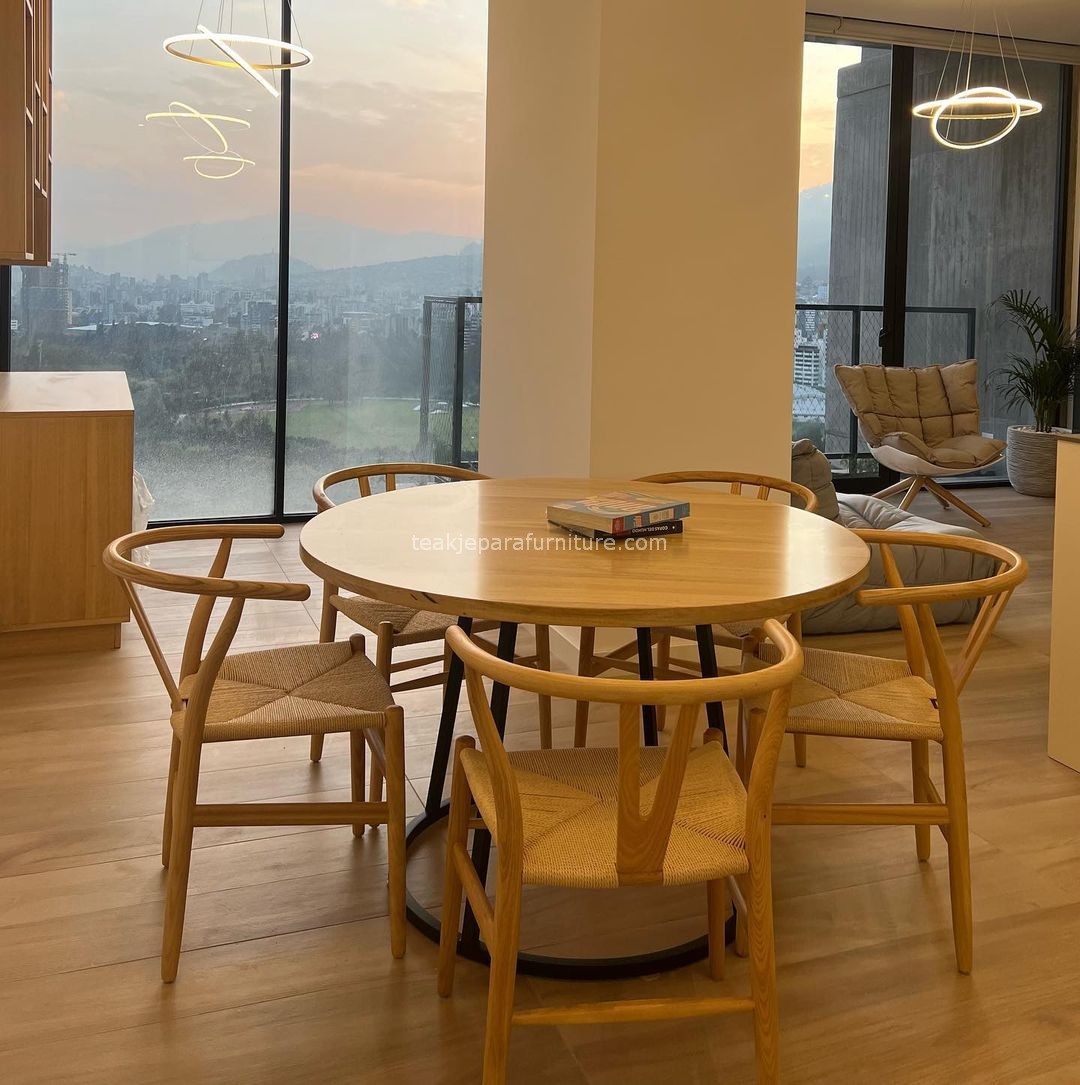Beyond mere usefulness, some interior decoration aspects embody enduring improvement and downplayed luxury, rising to iconic status. The Wishbone Chair is a prime example, combining remarkable craftsmanship with a special visual that has actually won a lasting location in homes, museums, and the love of individuals globally.
Photo entering a tranquil dining area flooded with sunlight from extensive windows, producing soft shadows over a set of Wishbone Chairs positioned around a simple table. Each chair, designed with classy lines and natural curves, motivates you to take a seat, relax, and appreciate the workmanship that changes regular items into amazing minutes.
Danish designer Hans J. Wegner introduced the Wishbone Chair in 1949, focusing on both practicality and elegance. Wegner’s style prioritized comfort, assistance, and visual appeal, with the chair’s distinct Y-shaped back not only making sure stability however also giving it its memorable outline.
Crafted mostly from solid wood, frequently beech or oak, the Wishbone Chair’s frame showcases the natural beauty of the product. The wood’s grain, carefully treated and polished, narrates of nature’s perseverance and the artisan’s dedication. The curved back-rest and carefully tapered legs display a harmony of type and and function, a balance that makes the chair as comfy as it is stunning.
Matching the wood frame is the seat, typically handwoven from paper cord. This precise process, requiring over 120 meters of cord and a number of hours to finish, results in a long lasting, flexible seat that adjusts to the caretaker’s body. The woven pattern adds a touch of texture and a hint of rustic appeal, more enhancing the chair’s downplayed sophistication.
Sitting in the Wishbone Chair, you experience a design that is considerate of the body. The curved back-rest uses subtle assistance, promoting correct posture and a sensation of spaciousness. The woven seat provides a cozy yet encouraging place to sit. This chair encourages relaxation, enjoyment of meals and chats, and the development of enduring memories.
The Wishbone Chair’s adaptability is an essential consider its classic popularity. It injects a tip of retro sophistication into modern dining areas, while in more traditional environments, it harmoniously blends and juxtaposes, elegantly reconciling heritage and development. Its downplayed design enables it to blend in with ease, whether surrounded by Scandinavian restraint or bohemian whimsy.
Beyond its aesthetic and functional qualities, the Wishbone Chair signifies a commitment to workmanship and sustainability. Each chair, still produced utilizing conventional approaches, is an event of slow design– a counterpoint to the disposable culture of mass production. Buying a Wishbone Chair is not just acquiring a furniture piece; it’s embracing a viewpoint that values quality, durability, and the beauty of natural materials.
In a world where trends come and go, the Wishbone Chair stays a continuous, a piece of art that never heads out of style. It’s a reminder that real beauty depends on simplicity, that good style is timeless, and that the important things we pick to surround ourselves with ought to improve our lives in ways both seen and hidden.
So, as you consider the next addition to your home, let the Wishbone Chair influence you. Allow its elegant lines and thoughtful design to raise your home, producing a space where charm and functionality coexist in perfect consistency. In the Wishbone Chair, find not just a seat, however a tradition– a tribute to the art of living well.





